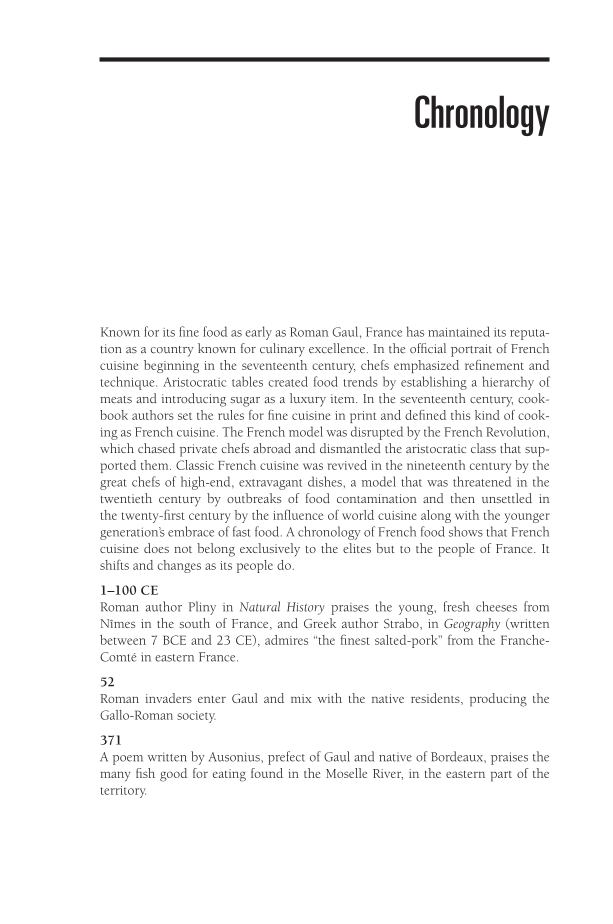Chronology Known for its fine food as early as Roman Gaul, France has maintained its reputa- tion as a country known for culinary excellence. In the official portrait of French cuisine beginning in the seventeenth century, chefs emphasized refinement and technique. Aristocratic tables created food trends by establishing a hierarchy of meats and introducing sugar as a luxury item. In the seventeenth century, cook- book authors set the rules for fine cuisine in print and defined this kind of cook- ing as French cuisine. The French model was disrupted by the French Revolution, which chased private chefs abroad and dismantled the aristocratic class that sup- ported them. Classic French cuisine was revived in the nineteenth century by the great chefs of high-end, extravagant dishes, a model that was threatened in the twentieth century by outbreaks of food contamination and then unsettled in the twenty-first century by the influence of world cuisine along with the younger generation’s embrace of fast food. A chronology of French food shows that French cuisine does not belong exclusively to the elites but to the people of France. It shifts and changes as its people do. 1–100 CE Roman author Pliny in Natural History praises the young, fresh cheeses from Nîmes in the south of France, and Greek author Strabo, in Geography (written between 7 BCE and 23 CE), admires “the finest salted-pork” from the Franche- Comté in eastern France. 52 Roman invaders enter Gaul and mix with the native residents, producing the Gallo-Roman society. 371 A poem written by Ausonius, prefect of Gaul and native of Bordeaux, praises the many fish good for eating found in the Moselle River, in the eastern part of the territory.
Document Details My Account Print multiple pages
Print
You have printed 0 times in the last 24 hours.
Your print count will reset on at .
You may print 0 more time(s) before then.
You may print a maximum of 0 pages at a time.


















































































































































































































































